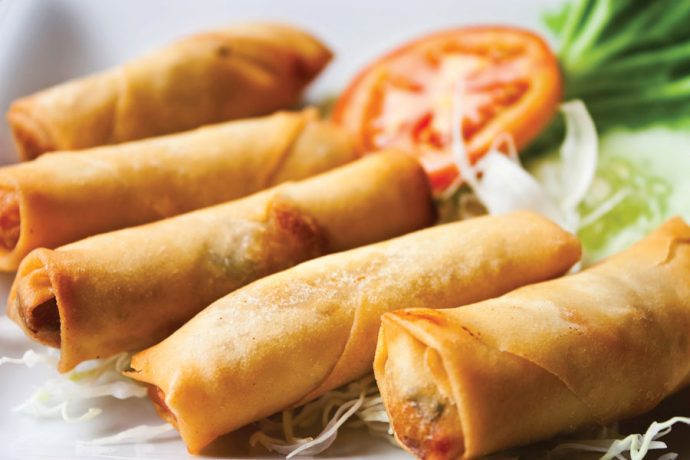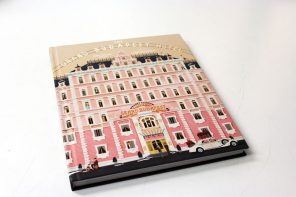Over the centuries Chinese culinary arts, as an extension of Chinese culture, have developed into a unique style specializing in a wide variety of exotic dishes from regional cuisines. The Chinese regard food as something more than necessary nourishment. Delicious meals symbolize good health, prosperity and longevity. Food is the center of family life and social activities.
Chinese food is now among the most popular fare in American restaurants and we all have our favorite, mouthwatering dishes, from dim sum to Peking duck to stewed lion’s head in pot (the Chinese version of meatballs). But one delicacy I have never seen on the menu in this country is stir-fried or barbecued silkworms.
Silkworm pupae is a traditional delicacy in northeastern China, where they are sold as street food on skewers to be deep fried. I am told they taste a bit like shrimp shells. The flesh inside is tasteless, like firm bean curd, but is scrumptiously spiced. Living pupae bought from markets can emerge as white moths and head for the nearest mulberry tree, which is their only sustenance.
I can well understand why silkworms are not on the menu in New York. Customers, wearing silken attire to dinner, could feel a bit queasy about making dinner out of the precious little caterpillars, extracted from silk-wrapped cocoons, that created China’s thriving economic export silk production, a multi-billion dollar industry producing about 150,000 metric tons of silk a year. After bequeathing their cocoons to silk fabrication, the dead pupae are used for animal fodder.
There are many legends about the discovery of silkworms. This the one I like best: In 3,000 B.C, Empress Leizu, wife of the mythical Yellow Emperor, was sipping tea under a mulberry tree when a cocoon suddenly dropped into her steaming tea. Lo and behold, the casing unraveled magically into shimmering, spider-web threads.
Entranced, Leizu pulled out a filament about 3,000 feet long and wound the silken strands around her finger. Her skillful ladies-in-waiting invented a loom to weave the threads into silk cloth and created a silken robe from about 2,500 unlucky cocoons. Thus the art of silk weaving began.
Leizu became known as the Silk Goddess. The miraculous natural fiber became a status symbol of royalty, so precious that it was kept secret, under penalty of death, for 2,000 years. Today, after some 5,000 years of careful sericulture, the manufacturers claim that one ounce of eggs, laid by a species of blind, flightless moth, (Bombyx mori), can produce about 39,000 worms which, after consuming a ton of mulberry leaves, can produce 12 pounds of silk filaments.
Between the fourth and fifth centuries B.C., silk spread to Europe and Egypt. The Egyptians and Europeans knew nothing about sericulture and called the mulberry tree a “golden tree.” Greece claimed silk was obtained from moistened mulberry leaves. China became known as the land of silk.
It was not until 440 that the secret of silk leaked out due to the vanity of a Chinese princess betrothed to a prince in the Central Asian kingdom of Khotan. The princess, desiring silken robes, smuggled silkworm eggs and mulberry seeds in her headdress as she rode along the Silk Road to Khashgar. Still, her beautiful robes remained a mystery until 550, when two Christian monks in Chang’an (Xi’an) smuggled silkworms and cocoons, hidden in hollow bamboo staves, into India.
Silkworm breeding spread to Central Asia and on to Greece in the sixth century. Eventually, the art spread farther west. Camel caravans carrying silk and luxury products from many countries vastly enhanced economic and cultural exchange between East and West. The Chinese art of paper, made from the bark of the same family of mulberry trees that nourished the priceless silkworms that in turn sacrificed their cocoons to create the raw silk that women spun into beautiful textiles, was also brought to the West along the Old Silk Road. Silk sparked the main trade along all the Silk Routes that brought ancient civilizations together for the first time in history.
In 2013 China’s President Xi Jinping revealed his “CHINA DREAM” — a New Silk Road. Xi called it “the project of the century,” the “Belt & Road Initiative” (BRI). His aim is to reincarnate the Old Silk Road by developing contemporary trade routes and building modern infrastructure worldwide. The embryonic BRI looms at a scale unprecedented in modern history involving more than $1 trillion.
So you see it all began with a bountiful mulberry tree, a mysterious silkworm and some ingenious women. There must be a message here.
Perhaps it can be found in the words of Sinologist and historian Johan Eital (1892): “The Chinese see a golden silk thread of spiritual life running through every form of existence and binding together, as in one living body, everything that subsists in heaven above and in the earth below.”
So let’s keep silkworms off the menu and let them continue producing silk.




